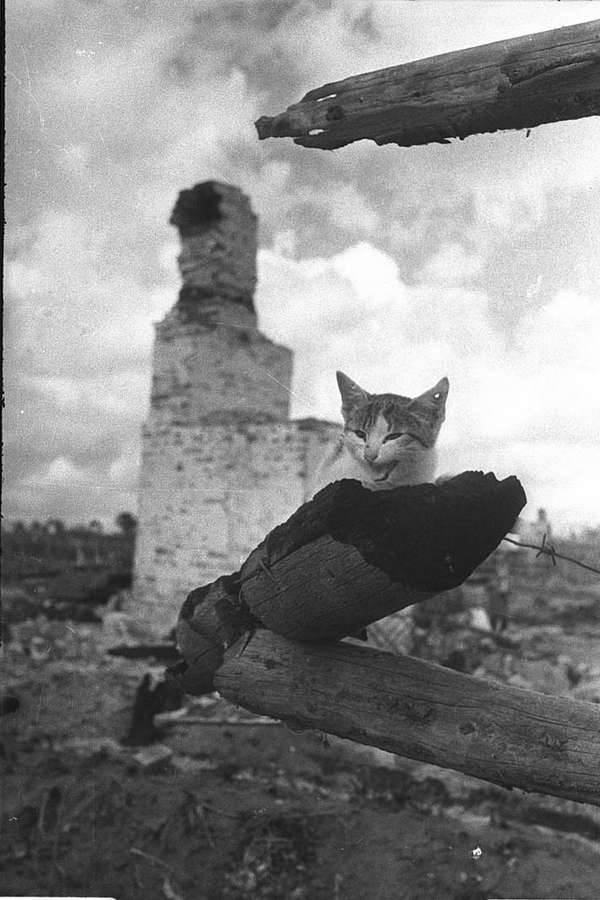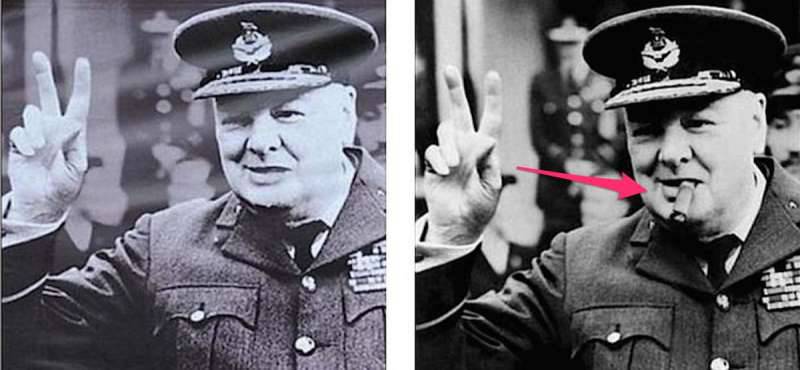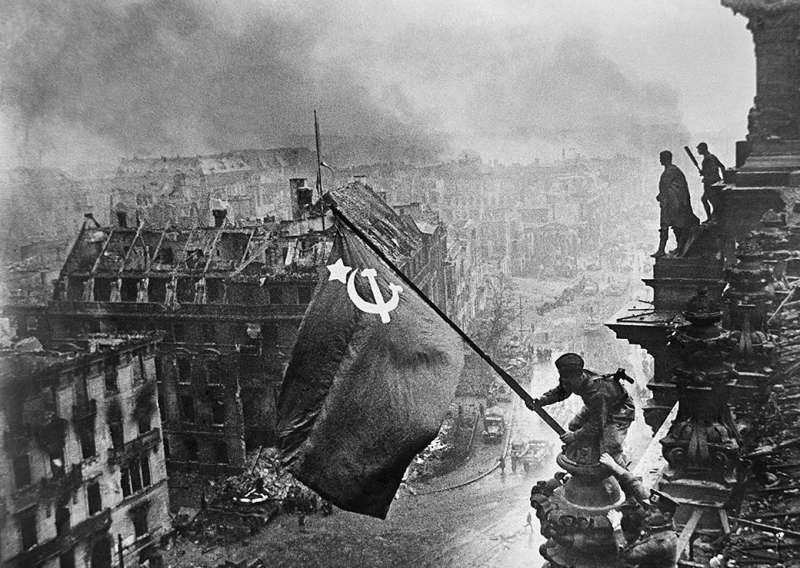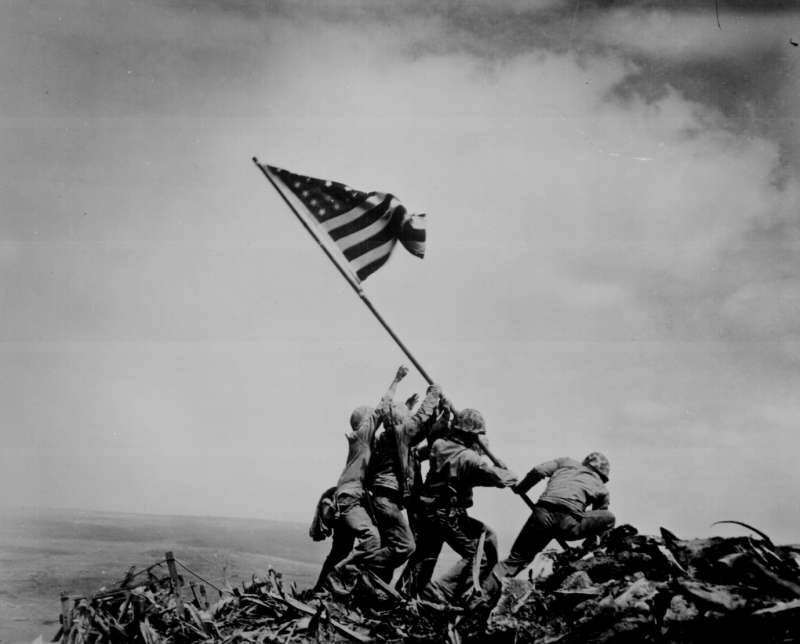Retouchers at war
Now this craft is called processing in Photoshop, and after the war, many photographers hunted by taking precious photos from widows and retouching them at their discretion.
In Russia, this art has come from America. Known for the most durable fake, which "personifies" 16-th American president. In fact, only the head of Abraham Lincoln is present in the photograph. Everything else - the torso, the setting, the globe, the flag - was inherited from US Vice President John Calhona. Who was engaged in this retouching is not known today. Also American craftsmen-retouchers worked actively on the heroes of their Civil War.
It is known that in Russia one of the first to use the method of photo retouching was Sergey Levitsky. He became a court photographer, and with great pleasure he photographed not only the imperial family of Alexander II, but also many famous people of that time. It was Sergey Levitsky who owned several iconic discoveries made by him in photographic work: in particular, he first began to use a combination of solar and electric light in the process of shooting, and was able to develop a retouching technique for the resulting images. But Sergei Levitsky used retouching extremely rarely, primarily for technical purposes. First, he was one of the first in Europe who made a decorative background using retouching. Secondly, he used retouching as a correction of technical blots made during the work. He was a high-class photographer. But many other authors did not possess such talent and began to actively apply the retouching method to correct their blunders. Retouching became so widespread that Levitsky was forced to write a special letter in his professional journal in which he condemned the excessive use of retouching.
But this call was not heard. Retouching remained to live for centuries, acquiring today completely different forms and frames. But the main principle - frame correction - remained unchanged.
So the unique profession - retoucher began to appear slowly. She was imperceptible and irreplaceable. Especially in the 30-ies, when the former comrades in the political struggle, dispersed in their views, one by one disappeared from the political horizon. And in the same way they disappeared by the brush of the retoucher, whose work became akin to the work of the artist.
In the 30 of the last century, Mikhail Gershman became a virtuoso of not only retouching, but also the creation of photographic portraits, the distinctive feature of which was the hours-long construction of the desired image, the desired frame. His work sometimes lasted for hours. For this, he received thanks from Voroshilov. Many 30 military leaders sought to take pictures with Gershman, then send their official photos to all-Union newspapers.
The new trend in art took advantage of many political leaders who were not satisfied for several reasons, their own appearance, as well as the presence or absence of the right people.
Benito Mussolini terribly did not like the picture, where he bravely sat on his horse, which was held by the bridles of one of his many fascist minions. Benito was supposed to be the one personifying his heroic pathos. Of course, the retouchers removed the horse, and in its place drew a landscape.
They tried to retouch Churchill's photograph several times - they cleaned the famous cigar.
But is it worth blaming retouchers in an effort to embellish reality? After all, they worked on the instructions of their superiors and fulfilled their received orders on excellent occasions. Although there were punctures. Most offended by their corrected photos, the authors of the pictures - professional photographers. Years later, when the dangerous time, in their opinion, passed, they tried to tell what changes had befallen their priceless shots. One of the most famous photographs concerning the coverage of the Victory during the Great Patriotic War — the flag over the Reichstag — was also retouched. But did this make it worse? Hardly. Judge for yourself. If in the initial version the red flag was not particularly well looked through against the general background, then in the retouched it became more red, attracting attention.
Yes, thunderclouds were also drawn, but they only emphasized the peculiarity and tragedy of the developing events.
Also, the vigilant editors examined the clock on Abdulhakim Ismailov’s hand and decided to remove it with a needle.
Only three technical interventions. This picture went around the whole world and, of course, fell into the hands of American ideologues, who set the task for their photographers to get the same picture.
The Americans tried to make a similar picture - “Hoisting the flag over Iwo Jima”. But it is unlikely that they were able to convey all the depth, all the tragedy, all the joy that is clearly manifested in Soviet photography. There, excuse me, the US military has turned the "rear" part. One of the American mothers identified her son's butt and even filed a lawsuit, arguing that "she had studied her son's ass well from the cradle too."
During the years of the Great Patriotic War, some front-line photographers specifically instructed retouchers on how to properly handle the image. Thus, the instruction in one sentence, written by the famous front-line photographer Mikhail Savin, who was able to catch a cat's ear in the frame and wrote so that the photo in this place is not retouched, is widely known.

The retouchers' affairs in 1985 were well known, when Mikhail Sergeyevich Gorbachev was "smeared" with a birthmark on his head.
In 2011, an unknown buyer paid Christie's $ 4 338 500 for the retouched photograph of the deserted bank of the Rhine (photo by Andreas Gursky). Of course, one of the most expensive photographers in the world, the German Gursky is a worthy successor to the business of retouchers. After graduating from the Dusseldorf Academy of Arts, he does not hide that he uses Photoshop when creating his three or four-meter photographs and paintings. This does not stop his fans. Ukrainian businessman Viktor Pinchuk posted in 2007 for one photo $ 3 340 456.
And here I want to stop. I remembered the terrible in its simplicity and tragedy history an ordinary village woman who retouched a photograph of her only beloved one who did not return from the front.
The herd of variegated rock swayed, the cows rushed together to the water, swaying with a heavy udder, pushing their sides in a narrow, like a trench, coastal descent. So, one after another, they entered the river. And then for a long time, almost a whole hour, they stood motionless, plunged by their necks into a warm river, which saved them from the heat and gadflies, half closed their sad eyes with their eyelids full of bites for centuries. Dear to the village, the cows had time to dry out, they came home dry and clean. They gave the milk to the housewives, waited the coolest heat in the cold stalls, and again Baba Klasha blew the horn, gathered her flock and again drove him to the river, now through the wooden bridge to the other bank. Here, on the river side, there was real grazing. True, it is far from the village, about five kilometers away, but the herbs here were untouched, thickly embroidered with flowers, this is where the rogula delicacy is! The cows grazed in the motley grass, and the woman Klacha sat under the willow bush, near the very river water, and thought her thoughts.
How much she lived in the world, how much she looked at the world around her, so much could not admire the sky and the night stars, early and evening summer lightning, the sun and grass, wheat fields, fields in the blue flowering of flax, in yellow sunflowers. To look and not to look at all this goodness, to live would be to rejoice in this so wisely created world.
“And people for some reason,” she thought, “start wars, kill one alone, even prepare such a wild weaponto shoot the Earth from space. " Listening on TV about wars, Baba Klasha shuddered with fear, or even squeezed her eyes tight, sitting at the TV, so as not to see young boys, women and children dying from bullets and bombs.
And she could not understand only one thing: what kind of people are they who want to fight, who don’t feel sorry for anything and anyone on Earth? Or did they not give birth to mothers? Or do they have neither wives, nor children, nor grandchildren? And if there is, then, it turns out, they are ready to condemn their bloodline to death? Then what kind of people are they!
So Baba Klasha was thinking in the shadow under a palm bush, recalling yesterday’s program on TV, when a gray-haired man with glasses told from the screen how many nuclear weapons were already stored on Earth.
And suddenly, as something heavy is thumping behind her back in the middle of a bush, how the branches of God's fears will crack! Baba Klasha was so frightened that the grandson, Slavik, who had climbed out of the bushes of Dunin, seemed to her at that moment not Slavik, but God knows who.
“Grandma Dunya sent me for you,” Slavik said. - I am going to shoot the cows, and you go to the village. There the photographer arrived, brought portraits.
- Had arrived?! - Baba Klasha lit up her face.
And she began to speak, hastily dressing a white handkerchief on her head, as if preening herself:
- So I will run. I'll run, and you look, Slavichek, do not lose cows. Here's a whip. Do not be afraid.
Catching up with one hand the hem of a long skirt, she safely straddled the bike and quickly twisted her pedals.
Baba Klasha was incredibly glad that the portrait of Grisha was brought so quickly. About three weeks ago, a white boy from a district center declared himself at their little farm. Bees on a red “Zaporozhets”.
I traveled around the village, went to the huts, offered to order large portraits from small cards, wrote out receipts, but did not take money in advance.
On their Forest Lane, all ordered portraits: who is his own, who is his son or daughter, and he and Dunya are portraits of their husbands, Gregory, who died in the war, and Fyodor, who died a year ago.
And earlier, when she was a widow at a young age, and now, in her declining years, Klavdia Danilovna Nazarchuk believed that her friend Duna Starodub had a lot more than her luck in life. Though Fedor lost both legs in the war, he was still a support and help for Dunya. True, not a simple story happened to Dunya and Fedor, but had this happened to her Gregory, and she would have rushed after him to the ends of the earth. And the story was like that.
The war was already over, it was forty-sixth year. She and Dunya have long received funerals for their husbands. Suddenly, Duna receives a letter from an unfamiliar woman. And the woman writes to her that she works as a weigher at the Razdolnaya station, where she happened to meet Dunin’s husband, Fedor Starodub, by chance. He writes that he is alive, only completely legless. What goes on trains in a pea jacket and peakless cap, sings plaintive songs, and people throw money into the capless cap, and he drinks them up, spends their nights wherever they go.
Once I asked a drunk man to sleep in her bed for the night, she let out so that she would not die in the cold, then asked who she was and where, remember the address and surname.
Dunya with crying came running to Klasch. Ten times they read that letter, cried together, decided what to do. Doubts that this is not Fedor, was not: he is Starodub, he is from Bees, he fought in the marines.
The next day, just in the cold fresco, Dunya left the village. And she returned in the spring, along with Fedor.
After Fedor was found, Klasha did not leave hope for a long time: what if her Grisha was alive? Maybe he, like Fedor, was mistakenly considered killed in battle? Maybe she will receive a letter like Duna? She had been waiting for such a letter for years. But it was not.
The forest lane was marginal and short (only eight houses on one side, and on the other pine forest), looked from end to end. And as soon as the woman Klash drove into her Forest and did not see a red Zaporozhets on it, she became alarmed: was she really late?
She flew to her hut with a lock on the door, leaned a bicycle against a brick wall, and immediately saw Manyu Prokhorenko, a former milkmaid who had left her yard, and now a “young retiree”.
“How long has he been a photographer?” - asked the woman Klasha.
- Yes, half an hour has not passed, - answered Manya. And, having guessed why the woman Klasha was alarmed, she began to justify herself: - I forgot that you are grazing today. If you said so. Or maybe Dunya took? - Baba Klasha suggested, and, having left Mania, hurried into a neighboring courtyard.
But she did not find any photos of her girlfriend. Terribly sick heart of an elderly woman. She sat for a long time with her girlfriend, listened to her consolation, but with each passing hour she felt worse and worse. The only card that remained from her dear, beloved husband who died in the war, she foolishly gave the white-haired photographer, broke up with the only memory of her husband, and now sits and does not know what to do.
It was decided to go to the district center and try to find a photographer there. And, maybe, he will turn in their edges? But the days went by, but the photographer was not there. In the district center, where Baba Klasha went, she wandered through the streets and could not find the photographer, nobody knew him there.
Already after this news, she fell into bed for a long time and did not rise until the first frost. And when I went out into the street, everyone suddenly saw how much old Klaš had grown old. She lived in the hope that her beloved, beloved one would still return, and this hope supported her on the most difficult days, did not allow her to let go of power. After all, many widows who have lost their husbands have not been able to raise their darlings from the pool of anguish of suffering.
But I had to live somehow further. And she lived. Often went to the gate, sat up late with the hope of seeing "Zaporozhets" photographer. But he did not come.
So a few years have passed. Older Baba Klasha still sat near her leaning little house and waited. She had not long to wait on this earth.



Information